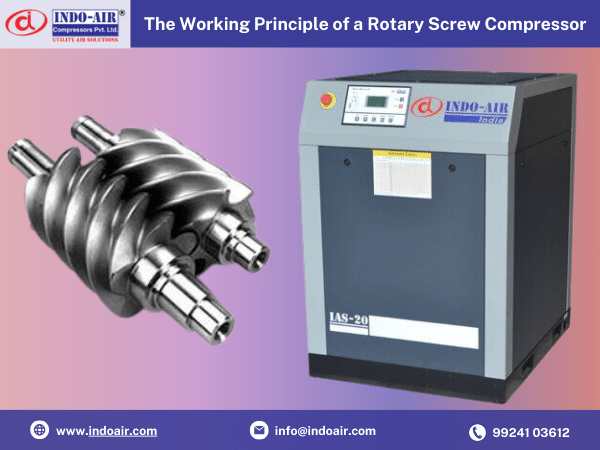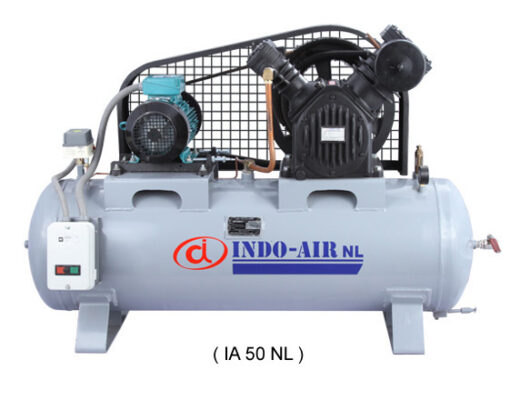The steady flow rate that rotary screw air compressors produce makes them the best choice for a range of industrial applications. Popular uses include those in small machine shops, the food and beverage industry, the automobile industry, the pharmaceutical industry, etc. Because of their dependability, effectiveness, and capacity to save energy, rotary screw air compressors manufactured by rotary screw air compressor manufacturers in India are perfect for industrial and commercial settings.
A rotary screw air compressor less commonly known as a “twin-screw compressor” compresses air using a pair of helical screws that are intertwined. The air is constantly squeezed as the screws revolve. Rotary screw air compressors are commonly employed in applications requiring continuous operation. For large industrial applications, this is the most often utilised as well as the successful air compression method.
Types of Rotary Screw Air Compressors:
- Oil-Injected: Oil is used to lubricate the screw unit and maintain smooth operation in an oil-injected (or oil-flooded) rotary screw air compressor. The oil also aids in cooling the compressed air and preventing the machine from overheating. After the air is compressed and an oil separator is used to extract the oil. Oil carryover can leave a tiny quantity of oil in compressed air, which can be decreased further by inline filtering. The most popular form of rotary screw air compressor is an oil-injected compressor, which is suitable for most applications.
- Oil-Free: A two-stage compression method is used by an oil-free (or oil-less) rotary screw air compressor. Between compression stages, air goes through an intercooler to reduce temperatures and avoid overheating. Oil-free rotary screw air compressors provide extremely clean air by removing any oil carryover. As per the air compressor manufacturers in Ahmedabad, oil-free rotary screw air compressors however, are more costly, more difficult to maintain, and louder than their oil-injected counterparts.
How do Rotary Screw Air Compressors work?
The Air Circuit
Atmospheric air is drawn into the air circuit through the inlet valve and filter. As soon as it enters the compressor, compression begins. Following this step, compressed air and oil are mixed and fed through a check valve into the oil separator and air receiver. The air is then expelled from the outlet valve after passing through an air cooler and a minimum pressure valve.
The minimum pressure valve makes sure that the pressure in the separator tank is greater than a specific level during operation, which is required for lubrication. Making sure that pressurised air doesn’t leak out is the check valve’s job. Both the input valve and the check valve close when the compressor shuts off. In this manner, pressurised air is kept out of the air filter.
The Oil Circuit
To ensure lubrication, oil is poured directly into the valves. In the air receiver/oil separator, the majority of that oil is removed. The oil particles are separated from the compressed air by centrifugal force. In an area of the oil separator that serves as a container, the oil is gathered. A bypass valve is also part of the oil circuit. This valve makes sure that when the temperature falls below a specified level, the supply to the oil cooler is cut off. As a result, the oil won’t needlessly cool.
The oil is driven through the oil filter and stop valve after the air receiver/oil separator using air pressure. The bypass valve allows oil into the oil cooler if the oil temperature is higher than the preset point. When activities halt or stop, the stop valve ensures that the compressor element isn’t flooded with oil.


